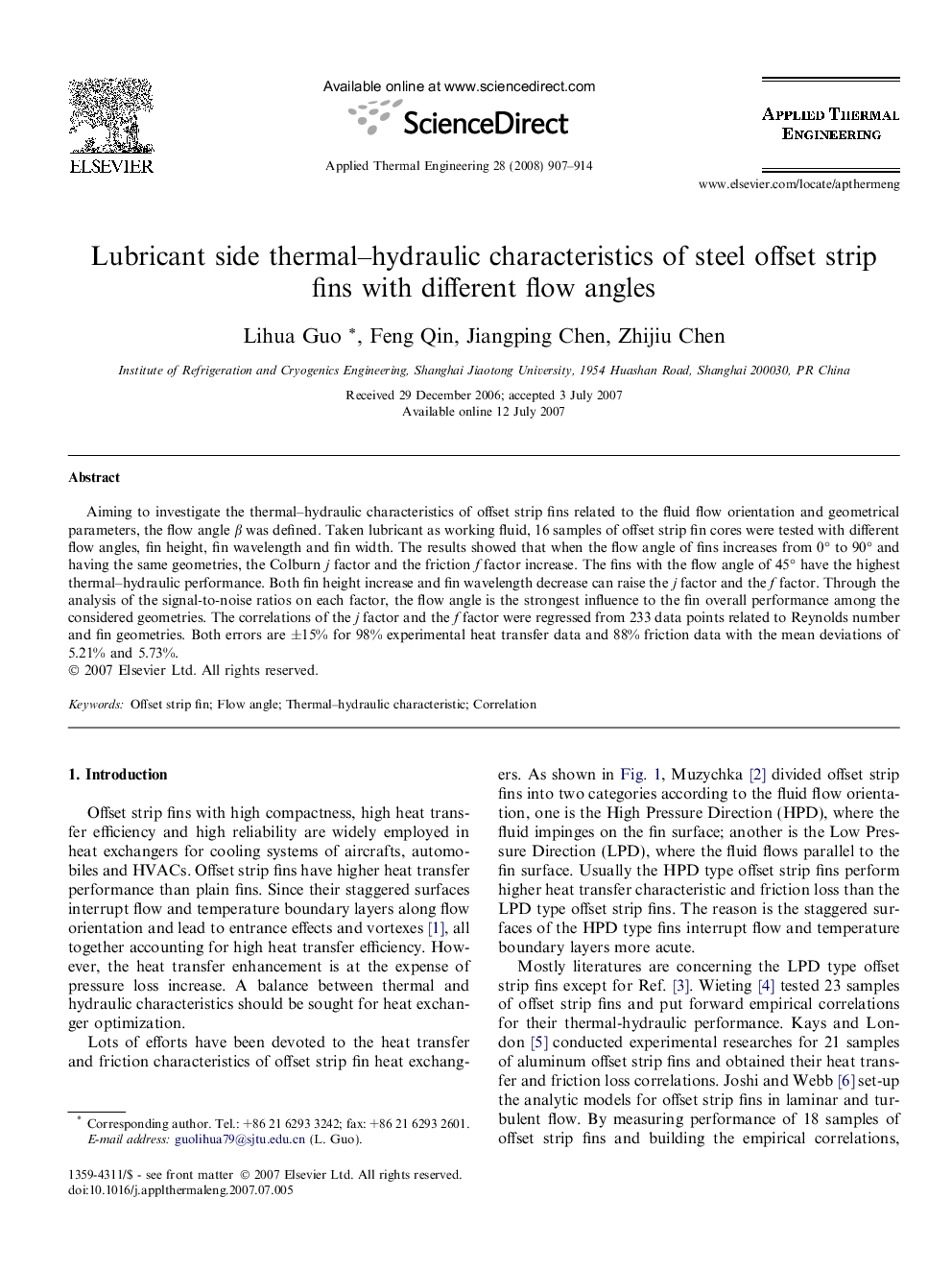| Article ID | Journal | Published Year | Pages | File Type |
|---|---|---|---|---|
| 648500 | Applied Thermal Engineering | 2008 | 8 Pages |
Aiming to investigate the thermal–hydraulic characteristics of offset strip fins related to the fluid flow orientation and geometrical parameters, the flow angle β was defined. Taken lubricant as working fluid, 16 samples of offset strip fin cores were tested with different flow angles, fin height, fin wavelength and fin width. The results showed that when the flow angle of fins increases from 0° to 90° and having the same geometries, the Colburn j factor and the friction f factor increase. The fins with the flow angle of 45° have the highest thermal–hydraulic performance. Both fin height increase and fin wavelength decrease can raise the j factor and the f factor. Through the analysis of the signal-to-noise ratios on each factor, the flow angle is the strongest influence to the fin overall performance among the considered geometries. The correlations of the j factor and the f factor were regressed from 233 data points related to Reynolds number and fin geometries. Both errors are ±15% for 98% experimental heat transfer data and 88% friction data with the mean deviations of 5.21% and 5.73%.
